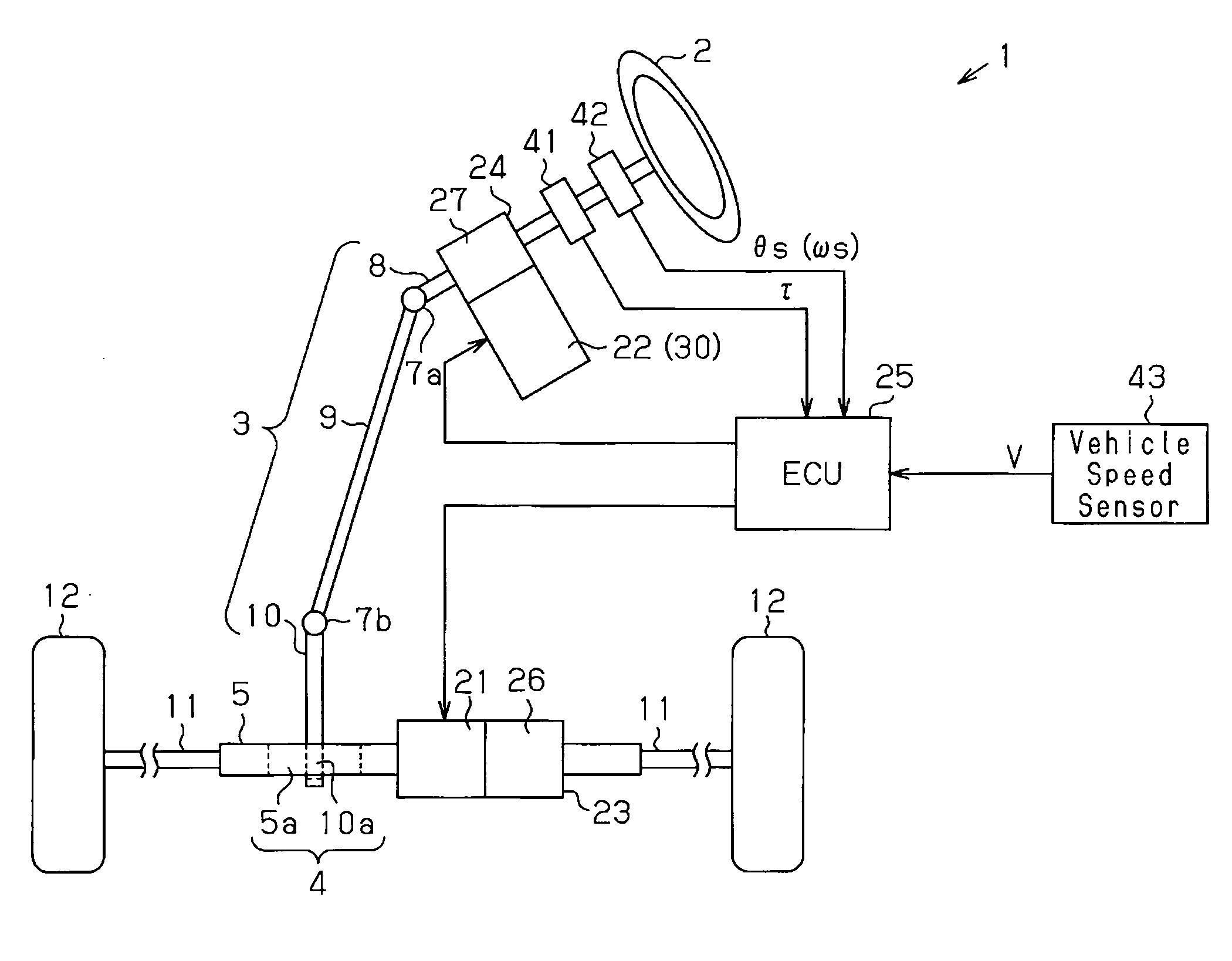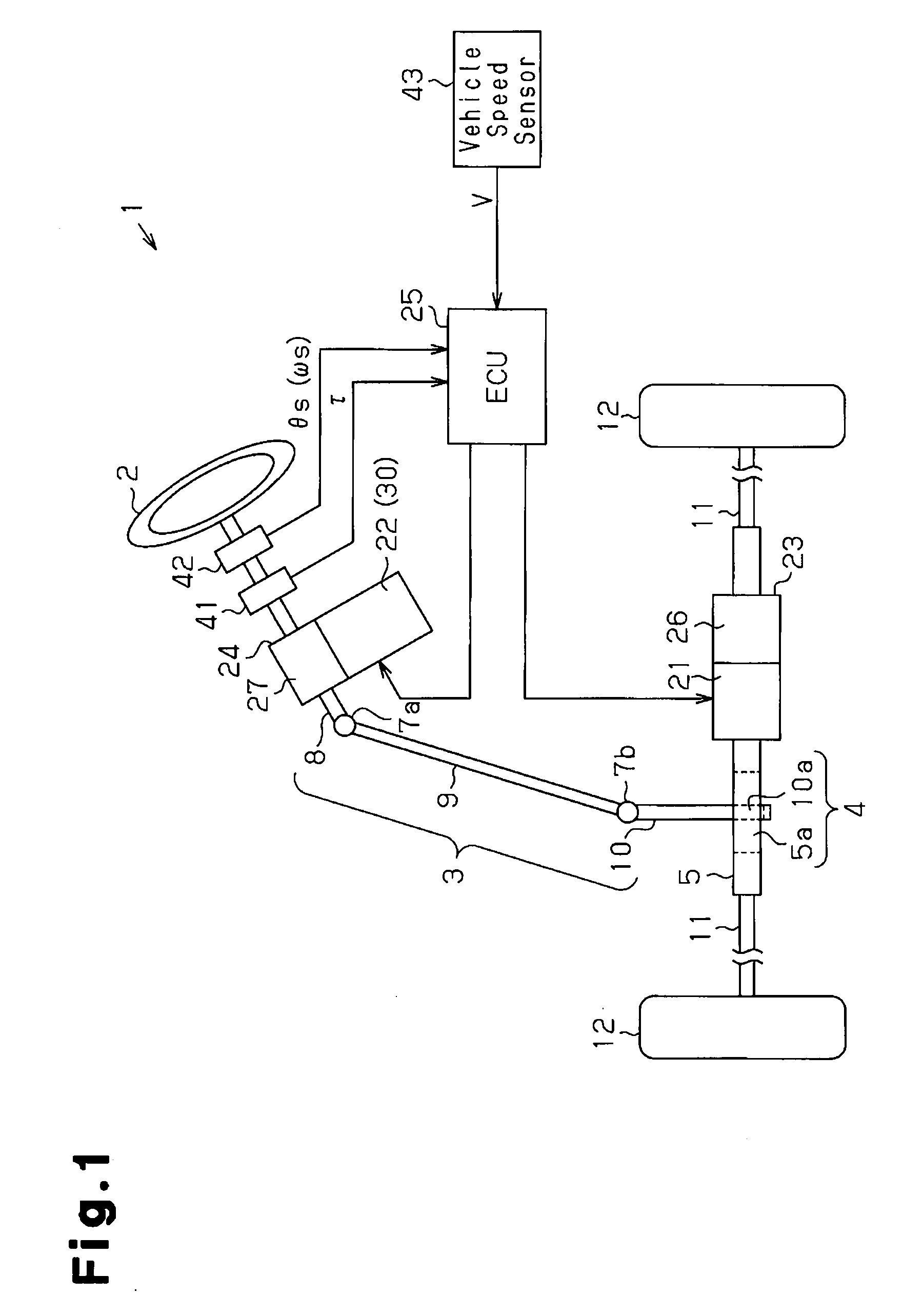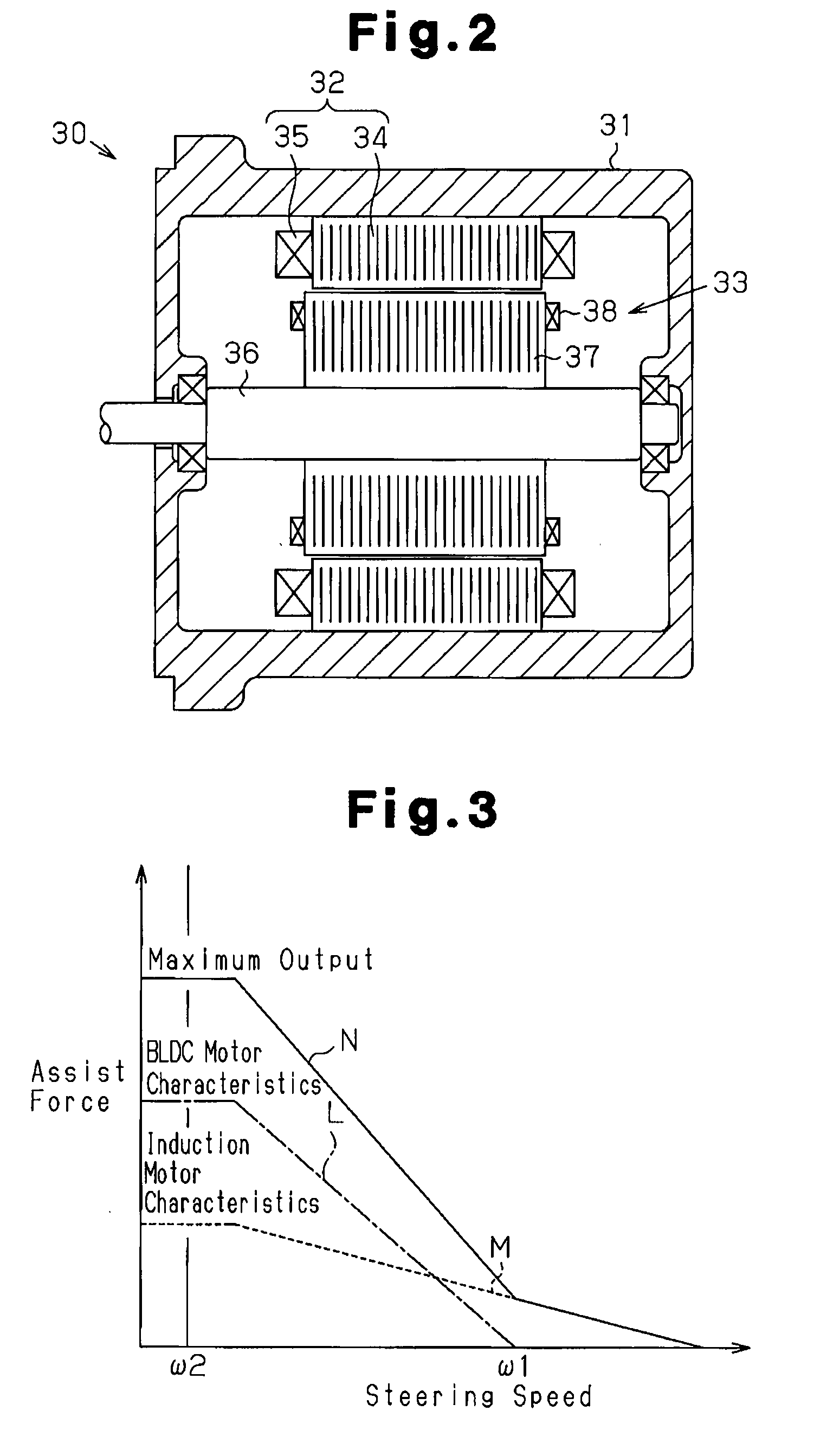Electric power steering device
a technology of electric power steering and power steering relay, which is applied in the direction of steering initiation, instruments, vessel construction, etc., can solve the problems of providing an expensive phase opening relay and saving costs, and achieve the effect of reducing vibration, maximizing the output ratio of the other one, and improving quiet operation
- Summary
- Abstract
- Description
- Claims
- Application Information
AI Technical Summary
Benefits of technology
Problems solved by technology
Method used
Image
Examples
first embodiment
[0032]A first embodiment of the present invention will now be described with reference to FIGS. 1 to 5.
[0033]As shown in FIG. 1, in an electric power steering device (EPS) 1, a steering wheel 2 is fixed to a steering shaft 3. The steering shaft 3 is connected to a rack shaft 5 through a rack and pinion mechanism 4. Rotation of the steering shaft 3 caused through steering is converted into linear reciprocation of the rack shaft 5 through the rack and pinion mechanism 4. Specifically, a column shaft 8, an intermediate shaft 9, and a pinion shaft 10 are connected together through universal couplings 7a, 7b in the steering shaft 3. In the rack and pinion mechanism 4, pinion teeth 10a formed at one end of the pinion shaft 10 and rack teeth 5a provided in the rack shaft 5 are mutually engaged. A tie rod 11 is connected to each end of the rack shaft 5. The linear reciprocation of the rack shaft 5 is transmitted to a non-illustrated knuckle through the tie rods 11. This changes the steering...
second embodiment
[0062]A second embodiment of the present invention will hereafter be described with reference to FIGS. 6 to 9. Detailed description of components of the second embodiment that are the same as or like corresponding components of the first embodiment will be omitted.
[0063]An EPS employing a motor as a drive source disadvantageously has a range of rotation in which noise specific to the motor easily occurs, or a range of the natural vibration. This problem of the range of the natural vibration cannot be solved by countermeasures involving control or configuration of the motor itself. Accordingly, in order to prevent the vibration generated by the motor from being transmitted to other components, the mounting portion of the motor, for example, has conventionally been constructed to prevent vibration. Considering this, in the EPS 1 of the present embodiment, if the steering speed (the rotation speed) of one of the motors 21, 22 corresponds to the range of the natural vibration and the re...
PUM
 Login to View More
Login to View More Abstract
Description
Claims
Application Information
 Login to View More
Login to View More - R&D
- Intellectual Property
- Life Sciences
- Materials
- Tech Scout
- Unparalleled Data Quality
- Higher Quality Content
- 60% Fewer Hallucinations
Browse by: Latest US Patents, China's latest patents, Technical Efficacy Thesaurus, Application Domain, Technology Topic, Popular Technical Reports.
© 2025 PatSnap. All rights reserved.Legal|Privacy policy|Modern Slavery Act Transparency Statement|Sitemap|About US| Contact US: help@patsnap.com



